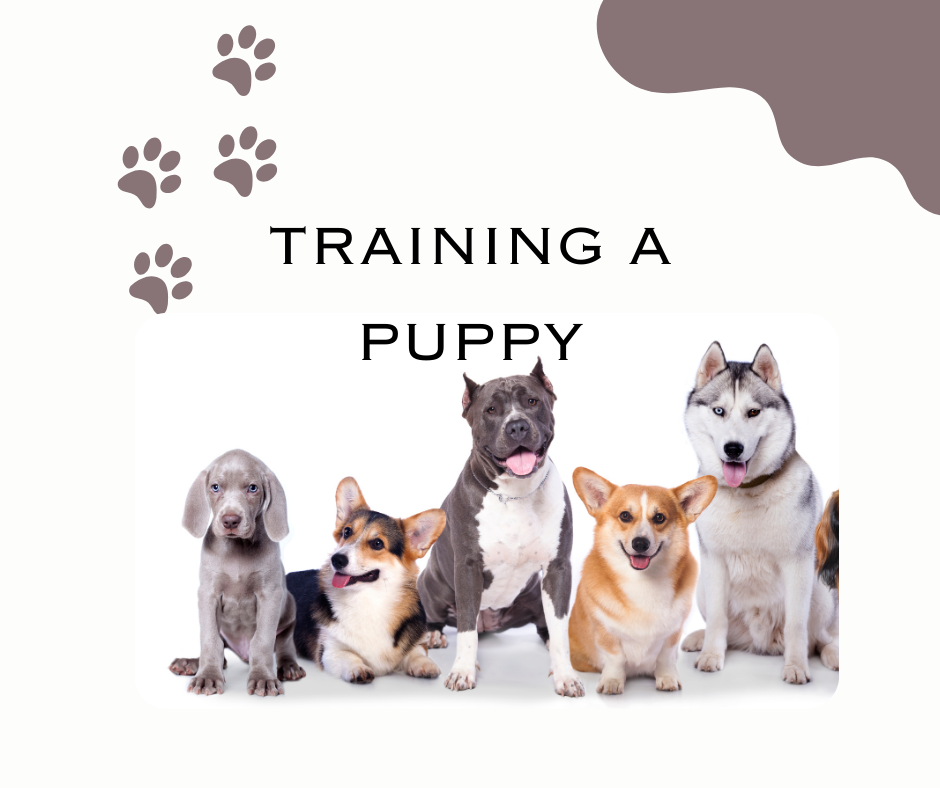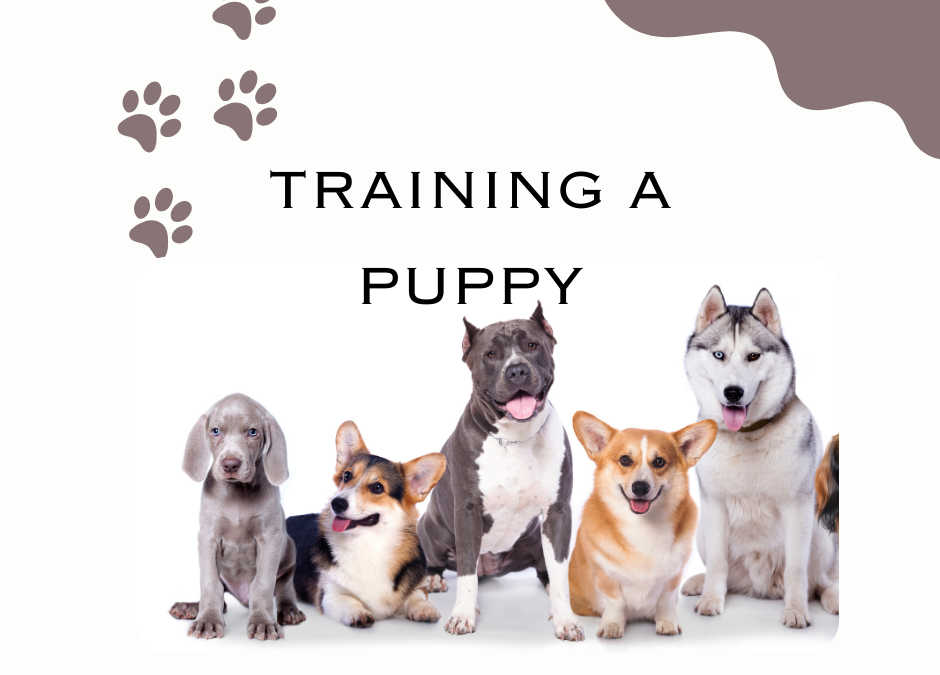Training a puppy is not just about teaching them tricks.
It is about shaping their behavior, fostering a strong bond, and setting them up for a lifetime of success.
As well as understand the importance of early training. Setting realistic expectations is a crucial foundation for this endeavor.

Training a Puppy: Unleashing the Potential of Your Canine Companion
Training a Puppy: Unleashing the Potential of Your Canine Companion
Embarking on the journey of training a puppy is not just about teaching them tricks.
It is about shaping their behavior, fostering a strong bond, and setting them up for a lifetime of success. As well as understanding the importance of early training.
And setting realistic expectations are crucial foundations for this endeavor.
I. Introduction
- Understanding the importance of early training
- Setting realistic expectations for puppy training
II. Preparing for Puppy Training
- Creating a conducive environment
- Gathering necessary supplies
III. Establishing Basic Commands
- Teaching sit, stay, and come
- Introducing leash manners
IV. Positive Reinforcement Techniques
- Utilizing treats effectively
- Implementing clicker training
V. Socialization and Exposure
- Exposing the puppy to various environments
- Encouraging positive interactions with other animals and people
VI. Handling Behavioral Challenges
- Addressing biting and mouthing
- Dealing with separation anxiety
VII. Advanced Training Techniques
- Teaching more complex commands like ‘heel’ and ‘leave it’
- Introducing agility and obedience training
VIII. Consistency and Patience
- Understanding the importance of consistency in training
- Practicing patience during the learning process
IX. Health and Wellness
- Incorporating exercise into the puppy’s routine
- Maintaining proper nutrition for optimal growth and development
X. Monitoring Progress and Adjusting
- Tracking the puppy’s milestones
- Making necessary adjustments to training techniques
XI. Seeking Professional Help
- Knowing when to consult a professional trainer
- Finding reputable training classes or programs
XII. Integrating Training into Daily Life
- Incorporating training sessions into daily routines
- Reinforcing good behavior throughout the day
XIII. Building a Strong Bond
- Fostering a strong bond through training
- Understanding the importance of trust and communication
XIV. Celebrating Achievements
- Acknowledging and celebrating milestones in training
- Reinforcing positive behaviors with praise and rewards
XV. Conclusion
- Reflecting on the journey of puppy training
- Embracing the lifelong benefits of a well-trained dog
Preparing for Training a Puppy
Creating a conducive environment involves removing any potential hazards.
And setting up a designated area for training sessions.
Gathering necessary supplies, such as treats, a leash, and toys, will ensure smooth training sessions.
Establishing Basic Commands
Teaching fundamental commands like sit, stay, and come lays the groundwork for more advanced training.
Introducing leash manners early on will prevent future pulling behavior during walks.
Positive Reinforcement Techniques
Utilizing treats as rewards effectively reinforces desired behaviors.
While clicker training provides clear communication and instant feedback to the puppy.
Socialization and Exposure to Puppy Training
Exposing the puppy to various environments.
Sounds and experiences from an early age promote confidence and prevent fear-based behaviors.
Encouraging positive interactions with other animals and people fosters good social skills.
Handling Behavioral Challenges
Addressing common challenges such as biting and mouthing requires patience.
Also, consistency in redirecting the puppy’s behavior.
Dealing with separation anxiety involves gradual desensitization and building independence.
Advanced Training Techniques
As the puppy progresses, introduce more complex commands.
Like ‘heel’ and ‘leave it’ challenges their mental agility and strengthens the bond between owner and pet.
So, incorporating agility and obedience training adds variety and fun to the training regimen.
Consistency and Patience with Puppy Training
It seems like consistency in training methods and expectations is key to helping the puppy.
Such as understanding what is expected of them.
Practicing patience during the learning process acknowledges that every puppy learns at their own pace.
Health and Wellness
Certainly, ensuring the puppy receives adequate exercise and nutrition.
Above all, support their physical and mental well-being.
As a result, they contribute to overall behavior and training success.
Monitoring Progress and Adjusting the Puppy Training
Again, tracking the puppy’s milestones allows owners to celebrate achievements.
And find areas for improvement.
Thus, making the necessary adjustments to training techniques ensures continued progress.
Seeking Professional Help with Puppy Training
Knowing when to seek guidance from a professional trainer can provide valuable insights.
And support for addressing specific training challenges.
Therefore, find reputable training classes or programs.
Even more, it offers structured learning opportunities for both the puppy and its owner.
Integrating Training into Daily Life
Incorporating training sessions into daily routines reinforces learned behaviors and strengthens the bond between puppy and owner. Consistent reinforcement throughout the day maximizes training effectiveness.
Building a Strong Bond
Training sessions supply valuable opportunities for bonding.
Also, it fosters trust and enhances communication between the puppy and owner.
A strong bond forms the foundation for a lifelong partnership.
Celebrating Achievements
Acknowledging and celebrating milestones in training reinforces positive behaviors.
And motivates continued learning.
Maybe praise and rewards serve as powerful tools for encouraging desired behaviors.
Conclusion of Mastering the Art of Training a Puppy: A Comprehensive Guide
Training a puppy is a journey filled with challenges, milestones, and rewards.
Certainly, investing time, patience, and love into their training.
As a result, owners can unleash the full potential of their canine companion.
In that case, enjoy a fulfilling relationship for years to come.









